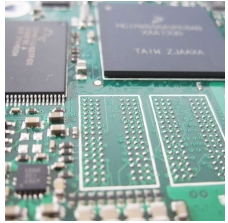What is white spot in PCBA processing and its component identification method: 1. White spots may be encountered in some PCBA processed products. White spots generally appear in the soldering process or the cleaning process after soldering, mainly manifested in the surface of the PCB, pins and solder joints. Or white spots or white residues appear around. The components of the white spots may be crystalline rosin, rosin denatured substances, organic and inorganic metal salts, group fluxes, fluxes or cleaning agents and other reactants, as well as other chemical substances produced by high temperature welding, but large Part of the reason is that the rosin or water-soluble acid in the flux has undergone a chemical change, causing the resulting substance to be more difficult to dissolve in the cleaning agent than its original composition. Generally, relatively loose resin residues can be cleaned and removed after swelling and dissolving by selecting a combination of different solvents based on the principle of similar compatibility and solubility coefficient.

However, organic acids will undergo metal saponification reactions with tin, lead and other metals and their metal oxides to form carboxylates, and the higher the temperature, the longer the time the more the formation. This type of hard metal salt cannot be removed by general solvents, so ultrasonics are needed to assist in cleaning. Therefore, the process can reduce the formation of such residues by lowering the temperature and shortening the time. In addition, the denaturation of organic matter after soldering brings difficulties to the composition configuration of the cleaning agent. In addition, the variety of the group flux and the chemical interference in the PCB production process, the intervention of certain solvents in the flux destroys the original surface quality of the group flux, making The phenomenon of white spots emerges endlessly, and only a targeted cleaning agent is selected. In view of the fact that there are many types of white spots and will have a certain impact on the quality of PCBA processed products, it is necessary to find out the causes of different types of white spots. White spots occur in wave soldering and reflow soldering processes, and the components of white spots are very complex. The cause is not easy to predict. Because the wave soldering process control is more complicated, and the identification of white spots is also difficult, the following steps can generally be used to confirm during PCBA processing. Second, PCBA processing white spot component identification method 1. PCB identification Take out a few unplugged bare boards from the problem batch, and use the general cleaning procedure to remove flux for pre-cleaning. The pre-washed bare boards are cleaned after standard assembly procedures. If the pre-washed board has no white spots after the same procedure, it means that the problem is that the bare board is contaminated. Confirm whether there is a problem with the manufacturing process of the bare board. 2. Flux identification Take out several unplugged bare boards from the batch in question. No flux is added, but other steps are carried out in accordance with the standard assembly process. If no white spots appear, it means that the problem is related to flux and solder. 3. Welding identification Repeat the flux identification, but skip the wave soldering step. If there is no white spot, it means that the problem is related to the welding temperature is too high or the time is too long. 4. Cleaning agent/cleaning process Identify PCBA processing after standard assembly process, extend the interval between welding and cleaning, and then clean after the temperature drops to room temperature. If no white spots appear, it means that the problem is related to the cleaning process temperature. 5. Identify other causes of PCBA processing surface residues caused by other causes. The shape can be inspected optically, or it can be observed by dripping water or alcohol and other solvents. If it is soluble in water, it is expressed as an inorganic residue, and if it is soluble in alcohol, it is expressed as an organic residue.